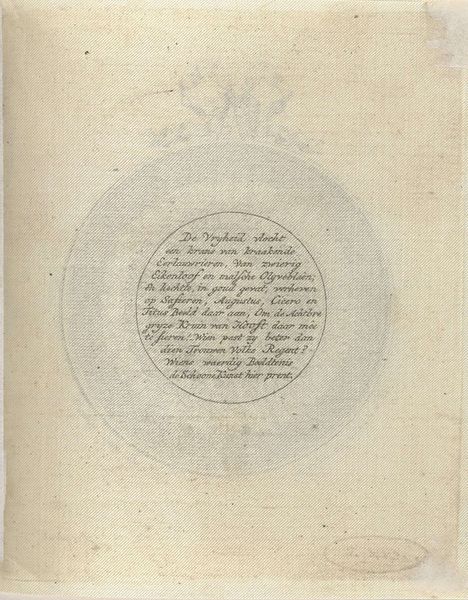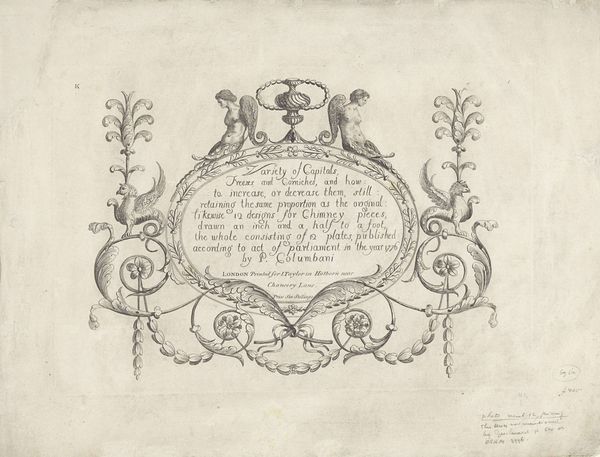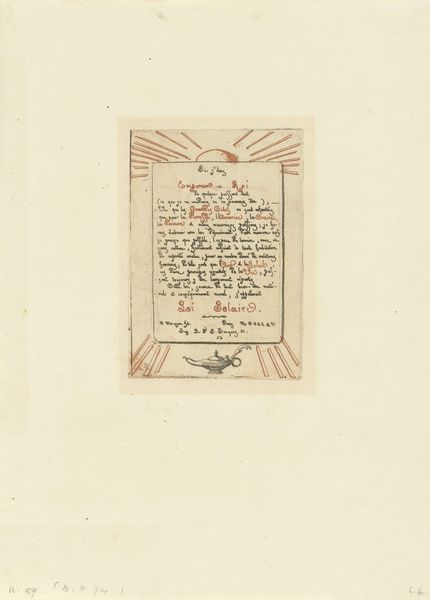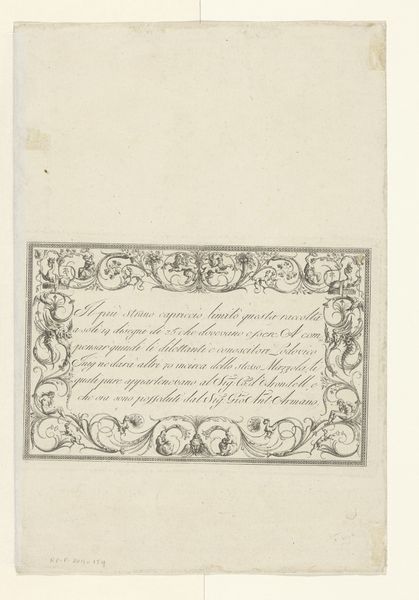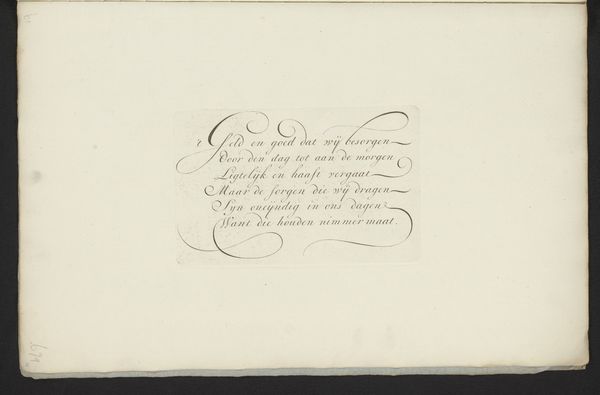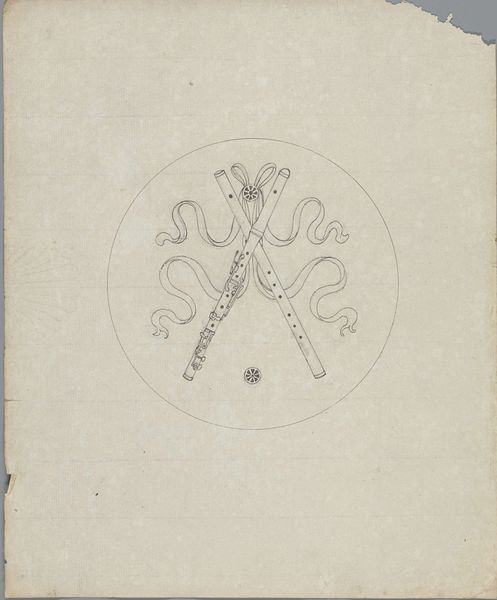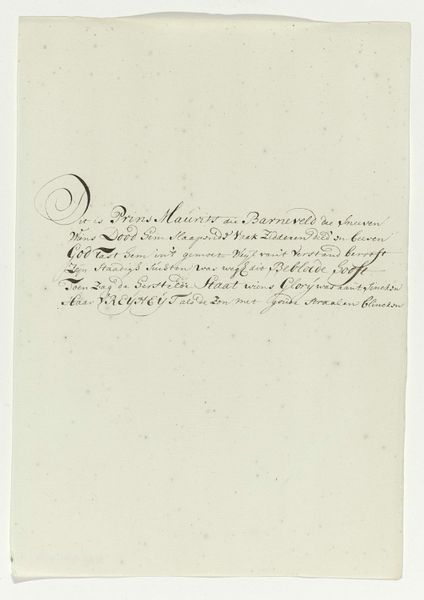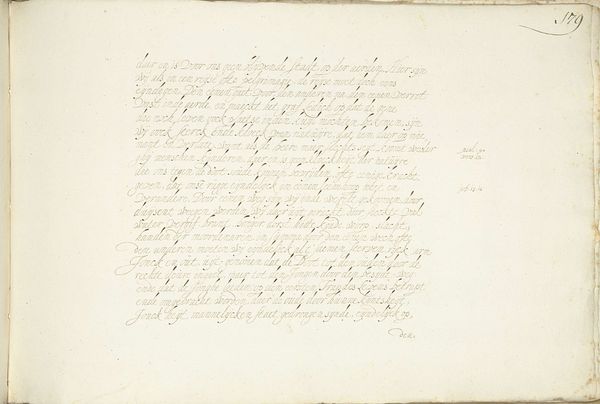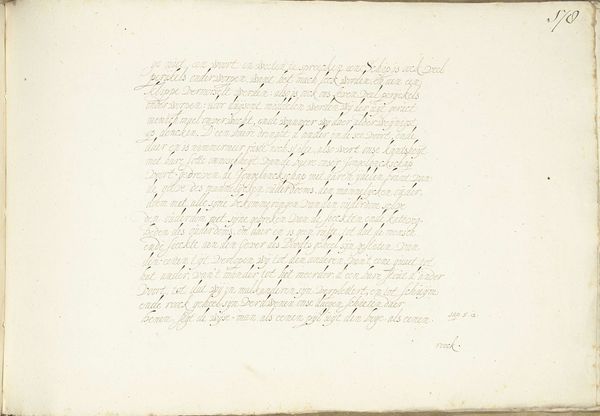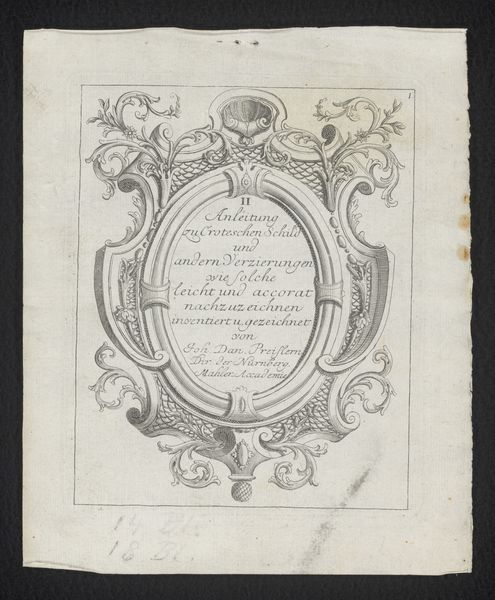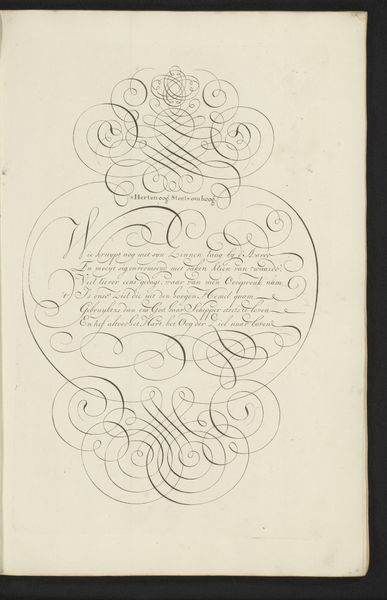
drawing, graphic-art, paper, pen
#
portrait
#
drawing
#
graphic-art
#
aged paper
#
light pencil work
#
old engraving style
#
hand drawn type
#
paper
#
personal sketchbook
#
fading type
#
pen
Dimensions: height 112 mm, width 93 mm
Copyright: Rijks Museum: Open Domain
Curator: Looking at "Vers over Hendrik Hooft Danielsz." from between 1787 and 1794 by Noach van der (II) Meer, now housed in the Rijksmuseum, what first strikes you? Editor: Its intimacy, almost like a secret whispered on aged paper. It feels delicate, fragile even, as if the very words might crumble with the slightest touch. A little melancholic, no? Curator: The artist rendered it in pen on paper. Its circular inscription brings to mind classical emblems—perhaps a visual echo of memorial wreaths or medals of honor, symbols promising remembrance and immortality. Editor: I love how it’s clearly handwritten. You can almost feel the pressure of the pen, the careful shaping of each letter. It reminds me of a personal sketchbook, thoughts poured out directly from the mind, yet crafted with such care for presentation. Is it poetry then? Curator: Indeed, it appears to be verse, an ode almost, weaving together images of freedom, laurels, and even sapphire. This carefully inscribed circle honors Hendrik Hooft Danielsz., seemingly associating him with the virtues of Augustus and Cicero. Editor: Intriguing company! So, is it a political statement then? A subtle promotion? Curator: It might well be, embedding classical references within a celebration of civic virtue. Those historical allusions carry considerable weight, painting Hooft as a champion of the people. I see a play of memory. It makes me wonder what Danielsz.'s contributions were. Editor: Absolutely, it seems like a miniature monument—intimate but imbued with a larger sense of civic responsibility. And in a way, its physical delicacy amplifies its meaning—as if these ideals, however powerful, always exist in a fragile balance. Thanks for revealing those layers, its weight, and symbolic power. Curator: And thank you for underscoring the beauty and melancholy in those fragile lines—the embodiment of remembrance, of things fading, but not yet gone.
Comments
No comments
Be the first to comment and join the conversation on the ultimate creative platform.
